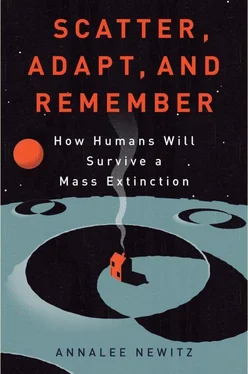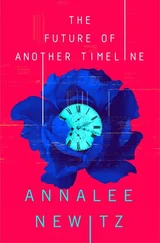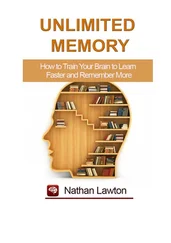Still, the Bay Area isn’t built on environmental principles alone. It’s also a successful region because its residents have consistently been on the cutting edge economically. “Going back to the Gold Rush, San Francisco has always had a big skilled labor force full of young, creative people,” Walker said. “That was true when they were inventing new kinds of mining equipment in the nineteenth century, and it’s true now with financial innovation and retail innovation, as well as electronics and biotech.” The Bay Area’s financial heart is truly in the long, braided terrain of farms, parks, and cities that make up Silicon Valley to the south. They pump cash from the innovative tech and science industries into a region that includes Marin County to the north and Berkeley and Oakland to the east. Today, many young people who are attracted to the culture of San Francisco come to the region to settle in its most famous city. But they commute every day to Silicon Valley in one of hundreds of sleek, Wi-Fi-enabled buses dispatched by Google, Genentech, Apple, and other companies to make commuting easier on their employees—and reduce emissions in the process.
Just as important as its economic success, however, is San Francisco’s status as what Walker called a “wide-open city.” By that, he means a city prepared to tolerate, and even embrace, experimental ideas. In the early twentieth century, the Bay Area was home to the nation’s earliest environmental groups, racially integrated unions, and a large gay community. In this way, San Francisco in the 1920s and ’30s was like Los Angeles and Berlin. But unlike those cities, the Bay Area never suffered a political crackdown on its most rebellious citizens. During the rise of fascism in Berlin, the Nazis drove out (and occasionally murdered) progressives and openly gay activists like the psychologist Magnus Hirschfeld. And in 1950s Los Angeles, the House Un-American Activities Committee persecuted people with leftist sympathies working in Hollywood. Many lost their jobs and had to leave the city. Meanwhile, in San Francisco, the radicalism continued virtually unchecked. Citizens founded environmentalist groups like the Sierra Club, and a general strike in the 1930s brought the city’s bosses to their knees. In the 1960s, an odd set of local environmental groups, industrialists, and politicians came together to battle developers who wanted to top up the bay with landfill so the city could sprawl from the Embarcadero in San Francisco across to Alameda in the east, and all the way down to Redwood City in the south. The environmentalists won that round, and the bay was protected from destruction.
Out of struggles like these arose a city unlike its predecessors, an urban environment that was green almost from its very inception. “The environment in the Bay Area welded many local opposition movements into a larger radical vision of a green city,” Walker explained. “The feeling here wasn’t ‘protect my neighborhood and screw everybody else.’ It was ‘protect my neighborhood and come hike in my green space.’ It was very public-spirited.” By the mid-1960s, the city’s coalition of local green groups had become so powerful that California passed the first of many environmental-protection laws to prevent anyone from ever filling in the bay for development.
In building the Bay Area, urbanites realized that success meant destroying the false division between country and city. But San Francisco is just one example of a city that has changed over time by getting greener. People in many cities, from Tokyo to Copenhagen, want to preserve local environments not just with protection laws, but also with solar power, high-efficiency buildings, and urban farms. Cities of the future are changing to include many aspects of the country within their boundaries.
As we’ll see in the next few chapters, urban planners, architects, and engineers are coming around to the idea that cities must be as much part of their environments as coastlines and trees are. Government and private industry are pumping billions of dollars into the development of energy-efficient buildings, solar power, smart grids, urban gardens, green roofs, and many other eco-technologies. The city of the future, most agree, will be planned the way the Bay Area has been for almost 50 years.
It may seem bizarre for the Bay Area to represent urban life of the future, given that an enormous earthquake or tsunami could wipe out the whole region tomorrow. But as we’ll discover in the next chapter, new engineering techniques could help our cities survive all but the worst natural disasters.
THERE’S ONE THING that never changes when it comes to city life. Disaster will always strike. Whether it’s from storms, floods, earthquakes, fires, or just urban decay that’s turned buildings into deadly hulks of rotting wood, cities fall apart. One of the biggest questions for urban planners and engineers is how to build cities that can withstand common calamities. It turns out the best answer is to destroy a lot of buildings on purpose. Engineers innovate city-building technologies by using enormous labs to re-create the worst disasters you can imagine—and then inventing structures that survive them.
Many of these labs are in remote facilities that you might at first mistake for storage warehouses, missile ranges, or airplane hangars. Several years ago, I crisscrossed the United States, trying to visit as many disaster labs as I could. I started with the Energetic Materials Research and Testing Center, a 40-square-mile swath of blue-veined rocky hills covered in sage brush next door to the White Sands Missile Range in Socorro, New Mexico. Between peaceful hillsides mostly dominated by wildlife, researchers from New Mexico Tech collaborate with government and industry scientists to study how explosions affect city environments. The day I was there, emergency responders set off a car bomb to see whether a specially reinforced brick wall could protect a test dummy from the blast. The dummy survived, though the “control” dummy behind a standard wall was shredded, as was the car. Analysts pored over the crater the car left behind, measuring the distance that the engine had traveled, trying to analyze every factor in the explosion. Other tests at the facility measure the effects of tanker explosions, gunfire, and even tiny suitcase bombs. Their results could help city planners and rescue workers design streets and walls to protect residents from harm.
Tests like these also help rescue workers learn new ways to pull people from wreckage that can be even more dangerous than the blasts that created it. Rescue innovation is a big part of what scientists and emergency responders study at Texas A&M’s Disaster City, another enormous open-air facility devoted to destruction for the sake of survival. Here, engineers can build whole city blocks just to blow them up in a re-creation of a meth-lab explosion or a house fire. They can simulate a train crash or root around for survivors in a collapsed parking structure. When I visited, engineers were testing experimental reconnaissance robots designed to fly or climb around in dangerous, unstable environments to find people trapped in rubble. Next to Disaster City is a fire field with a mock chemical-processing plant. While I watched, the technicians opened the valves on gas lines that fed into a maze of pipes and tanks, emulating what would happen if such a plant caught fire. Firefighters struggled to contain the two-story flames. I stood in the heat-mangled air outside the painted safety lines that bracketed the area like the sidelines on a basketball court.
While these facilities specialize in pyrotechnics, another network of labs in America and Japan are filled with huge machines that can simulate earthquakes and tsunamis. At Oregon State’s tsunami lab, engineers carefully erect scale-model cities around the “shoreline” in a 160-by-87-foot water tank, then create carefully designed tidal waves with huge paddles to see where the water washes ashore. The tank is lined with sensors that measure the movements of tiny beads of glass suspended in the water—this allows researchers to understand how waves propagate through oceans, and better predict how tsunamis will behave when they hit the shore. Sitting high above the tank in a control room, scientists use a computer to control the paddles, generating exactly the kinds of waves they want to send crashing down on the model city. They can imitate the conditions that would affect the speed and shape of a tsunami in a very specific region, such as the northern coast of Oregon or the San Francisco Bay. Ultimately, these tests help city planners determine a safe distance to build from the water, as well as the optimal places to put escape routes in case of flooding.
Читать дальше






![Аннали Ньюиц - Автономность [litres]](/books/424681/annali-nyuic-avtonomnost-litres-thumb.webp)





